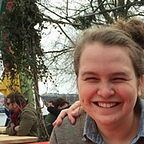Take 70: The Band Wagon
It’s interesting that we’re nearing the end of this list, and the first time Fred Astaire popped up is in Vincente Minnelli’s 1953 show about a show The Band Wagon. I skimmed Astaire’s filmography and I’m pretty sure I have never actually seen one of his films, and yet his character seems to have tap danced an impression into my consciousness without a first hand introduction. My first moment seeing him in an actual film, and not just a clip of a number, he is introduced as a washed up star that has become box office poison before slipping away to New York in search of a fresh start. At times I thought that The Band Wagon felt like the New York retort to the glossy Los Angeles romp, Singin’ In the Rain, which was released just a year before it’s moodier cousin. The two films share a writing team, Betty Comden and Adolph Green, and there are plenty of similar tropes — how do stars who lose appeal adapt to maintain relevance? What exactly is (capital E) Entertainment?
L.A. and New York have always been balanced opposites, not just geographically but also in mood and sentiment, reflective of the poles of our national psyche. On the Gene Kelly side the air is always warm and dry, and optimism is an asset. On Fred Astaire’s side, black apparel is the uniform and cynicism is a prerequisite. The Band Wagon is a musical comedy, and while it’s still jaunty, it’s certainly not as cheerfully fabulous as it’s predecessor.
Personally, I thought the film was okay but I wasn’t enthralled with the experience. Reading about the production process it makes sense that the final result was reflective of the labor behind the camera. I felt a sense of moroseness weighing on the movie that’s hard to pinpoint. It’s not there early on, when Astaire dances alongside a real life shoe shiner in the “Shine on Your Shoes” number, which is the most coherent and thematically appropriate of all the songs. It’s basically a tune about how if you’re feeling down on your luck a shoe shine can pick you back up — a good metaphor for Astaire, as Tony Hunter, returning to the stage after a mixed run in the movies.
I wondered while watching the film if some of Hunter’s troubles were based on Astaire’s flagging career but that seems to be inaccurate. Astaire had his best years ahead of him with Funny Face still to come. But it does sound like his insecurity beside the ballerina was an accurate reflection of his dynamic with his co-star, Cyd Charrise and there are reports that he was intimidated by her height and her classical training. This is mirrored on screen when after an outburst, the two make up and plant the early seeds of their romance during a lovely dance number in Central Park, “Dancing in the Dark” which is rightly adored by classic cinema fans and inspired a similar sequence in La La Land. I think this is where the film peaks in both form and function. This is the moment I was most rooting for the romance and felt most connected to the interior struggles of the actors. After this scene the focus shifts to the grind of production and the hubristic ambition of the director Jeffrey Cordova, played endearingly by Jack Buchanan.
Cordova’s ambitious vision for the musical doesn’t pan out and the audience at the preview leaves with disturbed disappointment. This is the moment where Hunter grabs the wheel and his confidence is restored as he rights the ship. What follows in a musical revue and a soundtrack of songs that had been cut from other studio films. It’s, frankly, bizarre, and while I appreciated the format of each song accompanying the show train’s arrival in each new city, I was either underwhelmed (“Louisiana Hayride”) or totally confused / slightly alarmed (“Triplets”) by the numbers. The show’s finale, “Girl Hunt Ballet”, is a jazzy noir-esque slinky show stopper that hit me as a little too long and a little dizzying. I also questioned Minnelli’s abundant use of the camera and jump cuts in the editing, as the film was largely meant to glorify the beauty that is inspired by the constraints of a stage.
It’s interesting that the only song written specifically for this movie, “That’s Entertainment” saw such great success as a standard in showtunes after the film’s release. This is the type of movie that makes me think of the long arch of cinematic evolution. I can imagine my grandparents seeing this in a one screen theater with a marquee, and delighting in its majesty and the technicolor and the big stars. I can picture a young Liza Minnelli, who apparently tailed her father on set during the filming of the most iconic scenes, stowing away nuggets of the show biz life that would resurface decades later in Cabaret, adding another link to the chain. The Band Wagon might not ultimately withstand the erosion f cultural taste, or maybe this a me problem and it will have a resurgence in modern consciousness. Either way, it is ultimately this evolution of our appetite for different forms of comedy and tragedy and character growth that is part of the magic of film, maybe that’s entertainment after all.
